Transportation
Highlights
Scroll below the selected highlights for the full set of indicators.

CAFE Standards
Corporate Average Fuel Economy (CAFE) standards have had the greatest impact of any energy efficiency policy in terms of energy savings, improving the miles per gallon of new passenger cars by more than 90% since 1975.

Medium and Heavy Duty Vehicles
Medium- and heavy-duty vehicles make up 9% of total vehicle miles traveled yet account for about 25% of all highway energy use. This segment’s vehicle miles traveled is expected to increase by more than 30% by 2050.

Electric Vehicle Sales
Electric vehicles sales have more than doubled and the number of charging stations has more than tripled since 2019. The U.S. now has an estimated 1.5 million electric vehicles on the road.

Increasing Miles Traveled
The number of vehicle miles traveled has tripled since 1970, leading to significant increases in traffic congestion, which leads to increase consumer costs and air pollution

Vehicle Occupancy Also Matters
The efficiency of transportation modes depends on the vehicle’s fuel economy, but also on how a specific vehicle is utilized. Vehicles that are efficient and travel full are the best options to reduce strain on infrastructure and traffic congestion while transporting goods and people to their destinations.
46
Light-Duty Fuel Economy Standards
Fuel economy of new light-duty vehicles has improved by more than 90%, but the future trajectory will be determined by policy
Source: EPA (2021), Automotive Trends Report
Source: EPA (2021), Automotive Trends Report
DETAILS
Transportation currently accounts for the largest proportion of U.S. greenhouse gas emissions of any sector (27%) and approximately 67% of U.S. oil use.1, 2 Corporate Average Fuel Economy (CAFE) standards (and since 2012, the accompanying greenhouse gas emissions standards), have had the largest impact of any U.S. energy efficiency policy. Average fuel economy for light-duty vehicles has improved from approximately 13.1 miles per gallon (mpg) in 1975 to 25.3 mpg in 2021, with dramatic initial gains, a 17-year decline, and since 2005 significant though slowing improvement again. During this period, passenger cars experienced impressive growth in horsepower. The second chart shows the improvement in real-world miles per gallon of several different light duty vehicle types.
The Biden administration has begun to make up for stalled progress by putting in place new fuel standards that will require carmakers to achieve average fuel efficiencies of 49 miles per gallon. The California Air Resources Board (CARB) has taken an even more aggressive route, requiring all vehicles sold in the state to be zero-emissions vehicles by 2035.
47
International Fuel Economy Standards and Targets
Many countries plan to implement fuel economy standards that would surpass U.S. levels
Source: ICCT (2022)
DETAILS
The U.S. has set aggressive new the fuel economy standards. In 2022, it has only the second most stringent standards, after Brazil. other countries are further along in strengthening fuel economy targets for their own fleets. By 2025, U.S. fuel standards fall behind China and New Zealand. The European Union is considering net-zero fuel standards by 2035, the strongest of any other country. Their regulations will likely have important impacts for U.S. competitiveness in the auto market, as well as for U.S. greenhouse gas emissions and energy use overall.
48
Medium and Heavy-Duty Modes
Long-haul freight trucking performs only 9% of vehicle miles traveled, but is responsible for 25% of all highway energy use, and is projected to increase
Source: EIA (2022), Annual Energy Outlook 2022
Source: EPA (2022)
Source: AFDC (2020), Average Fuel Economy by Vehicle
DETAILS
While a small percentage of vehicles, medium and heavy-duty vehicles make up a significant part of pollution impacts relative to other highway transportation modes. In particular, the heavy truck segment was responsible for approximately one-quarter of total energy consumption and the carbon dioxide emissions for all highway transportation in 2021, in spite of the fact that it was only responsible for 9% of the vehicle miles traveled. Additionally, the vehicle miles traveled by this segment are projected to increase by more than 30% by 2050.3
Advances in fuel economy, utilizing alternative freight modes like rail and waterways, alternative fuels in highly efficient engines (such as hydrogen and renewable natural gas – a prime example of redirecting energy waste to productive energy use with a wide variety of applications),4 and streamlining logistics will likely be important to keep this segment energy-productive, and reduce local particulate, NOx, and carbon emissions.
49
Light-Duty Electric Vehicles
The size of the light-duty electric vehicle market has tripled from 2015 to 2022
Chart credit: Atlas (2022), EV Hub
DETAILS
Electric vehicles (EVs) in the light duty segment (which include battery-electric, plug-in hybrid, and fuel-cell electric vehicles) present significant efficiency gains over conventional vehicles, with battery-electric cars estimated to be twice as efficient as a conventional car on a well-to-wheel basis.5 The U.S. market for these vehicles has grown quickly in the last decade, driven in part by Zero-Emission Vehicle mandates in select states, and federal and state tax credits. In the first two quarters of 2022, the annual U.S. sales of EVs have already exceeded total sales in 2015 by more than a factor of four, to 430,000, primarily due to battery-electric vehicle growth. The U.S. currently has an estimated 1.5 million electric vehicles, and there are 84 different makes and models of plug-in hybrid and battery-electric vehicles on the U.S. market as of September 2022.6, 7
50
EV Transit
Electric transit buses can provide clean, efficient, and affordable transportation
Source: Calstart (2021)
DETAILS
The adoption of full-size, zero-emissions transit buses grew by 27% between 2020 and 2021 in the U.S. California has the largest number of zero-emissions transit buses (1,371) and has passed regulation that transit buses must be zero-emission by 2030. Nationally, the number of zero-energy buses is expected to increase as a result of new funding through the Infrastructure Investment and Jobs Act.
Battery-electric buses make up the large majority of zero-emissions transit buses in the country today, likely due to their cost, charging infrastructure requirements, and other operational considerations. Fuel cell adoption is also expected to increase as these buses perform better on longer routes and transit agencies are increasingly considering these buses for longer routes.8
51
EV Charging Infrastructure
The number of EV charging stations has increased by more than 5-fold since 2009
Source: DOE (2022), Alternative Fuels Data Center
Source: DOE (2022), Alternative Fuels Data Center
DETAILS
EVs require wide availability of EV-charging infrastructure to mitigate the market barrier caused by range anxiety.9 The number of charging stations available in the U.S. has grown dramatically in the last 10 years, expanding in number and geographical coverage. As of September 2022, there were 36,213 publicly available charging stations that were Level-2 or Direct Current Fast Charge (DCFC) stations, which are capable of charging most vehicles in 20 to 30 minutes. This is an over 200% increase in chargers relative to 2019, when it was estimated that roughly 10,000 of these charging stations were installed nationwide.10
52
Vehicle Miles Traveled
Vehicle miles traveled have tripled since 1970
Source: DOT (2019), Travel Monitoring
DETAILS
Since 1970, Americans have nearly tripled the number of vehicle miles traveled by cars and trucks. Though COVID led to a dramatic decrease in vehicle miles traveled in 2020, the U.S. is already on track to exceed its 2019 levels. More driving leads to traffic congestion, resulting in increased energy waste, air pollution, time waste, and costly infrastructure degradation.
53
Utilization Of Transportation Modes
Transportation modes have lower energy intensity when used at higher capacity
Source: ORNL (2022), Transportation Energy Data Book 40, Table 2.13
DETAILS
Efficiency in the transportation sector is related to the efficiency of the vehicles, but also to the load factor, which reflects vehicle occupancy. These factors can be combined to consider the passenger miles per gallon of gasoline (pmpG), which quantifies the efficiency of moving one person one mile at a given vehicle fuel economy and vehicle occupancy. On a pmpG basis, rail options tend to be the most efficient travel modes (80-140 pmpG), but domestic flights, which exhibit the lowest fuel economy (0.45 pmpgG) appear relatively efficient per passenger due to a high load factor (averaging 120 passengers per flight) — a reflection of airlines’ efforts to ensure planes fly full. In contrast, transit buses currently exhibit lower pmpG (26) than cars (43) due to lower average levels of national bus ridership. However, during high ridership periods, transit bus pmpG is estimated to be over four times higher (137).11 This illustrates the value of increasing not only fuel economy, but the utilization of such modes.
54
Transit Equity Metrics
Access to clean, efficient transit is an essential equity consideration
Clean, Efficient Transportation for Low-Income Communities Scores (out of 6 possible points)
Source: ACEEE (2021) City Scorecard
DETAILS
Creating a broad low-carbon transportation system is an essential part of reducing transportation-related greenhouse gas emissions (GHG), localized pollution, creating livable communities, and ensuring that our transportation system serves everyone.12
As cities have sprawled and jobs have moved away from urban cores, many low-income communities have become geographically isolated and inadequately served by affordable, efficient transportation. These communities’ transportation options are often limited to automobiles and unreliable public transport services. Expenditures for vehicles, including the cost of fuel, insurance, and maintenance, can be large and unpredictable for these households. Cities can use a number of policy levers to increase access to mobility options other than personal vehicles in low-income communities, such as low-income housing near transit, low-income access to high-quality transit, and subsidized access to efficient transportation options.13
Footnotes
- EPA (2022) Greenhouse Gas Inventory Data Explorer
- EIA (2022)
- EIA (2022), AEO2022 Reference Case
- Johnson, K., George, K., Cavan, (2018), Ultra-Low NOx Near-Zero Natural Gas Vehicle Evaluation ISX12N 400. UC Riverside.
- Argonne National Laboratory (2018),Greenhouse Gases, Regulated Emissions, and Energy Use in Transportation (GREET) Model, 2018 WTW Calculator. GREET estimates well-to-wheel efficiency gains (in Btu/mile) for different passenger car types relative to a conventional gasoline vehicle: 40% for hybrid electric vehicles, 223% for battery electric vehicles running on the average U.S. electricity mix, and 50% for fuel cell electric vehicles running on hydrogen produced by centralized natural gas steam methane reforming.
- DOE (2022), Alternative Fuels Data Center
- EV Adoption (2022), EV Models Currently Available in the U.S.
- Calstart (2021), Zeroing In On Zebs
- Forbes (2021), Range Anxiety Is Very Real, New J.D. Power EVs Survey Finds
- DOE (2022), Alternative Fuels Center.
- DOE (2022), Alternative Fuels Data Center – Public Transportation
- ACEEE Transportation System Efficiency
- ACEEE (2021), City Scorecard

